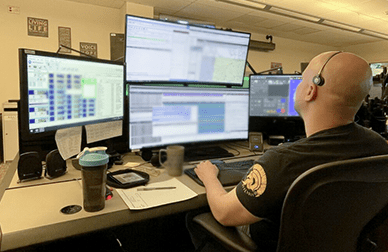In response to citizen concerns about reports in the media lately about finding credit card skimmer devices being used at gas stations, Sheriff Spurlock wants to warn citizens to be diligent when it comes to using their credit cards when they are out and about. “Please be vigilant when it comes to your personal property and information. It is sad that we live in a time that we have to be suspicious of so many things around us. Pass the word on to your family, friends and neighbors; help keep them safety conscious as well”, Sheriff Spurlock states.
What are card skimmers?
Card skimmers are small, electronic devices that criminals secretly install at payment terminals. When someone swipes their card to make a payment, these devices steal the information off the card’s magnetic stripe. From there, criminals use this stolen data to make fraudulent purchases or create counterfeit cards.
Card skimmers at fuel pumps
While any type of payment terminal is a potential target for card skimmers, fuel pumps are a preferred choice for many crooks because they’re accessible places for hiding and retrieving their skimming devices. If gone undetected, a single card skimmer at a fuel pump can capture data from 30 to 100 cards per day.
Fuel pumps can be affected by two types of card skimmers: internal and external. An internal device is installed by breaking into the pump through the fuel dispenser door, while an external device is installed over an existing card reader, hidden in plain sight.
Potential warning signs of a skimmer at a fuel pump
Card skimmers can be difficult to detect at the fuel pump, another reason they’re prime targets for data thieves. While there’s no guaranteed method for spotting a compromised fuel pump, there are a few warning signs you can look for:
Something looks off. When skimming occurs at a gas station, it usually only happens at a single pump. Next time you’re filling up, take a look around at the other pumps. Does the card reader at your pump match the others? If the card reader at one pump looks obviously different from the others, consult with a gas station employee.
The safety seal is broken. Many gas stations place serial-numbered security stickers across the dispenser doors on their fuel pumps. In order to install an internal skimmer, a fraudster has to break this seal. If the sticker on your fuel pump is torn, this could also be a warning sign.
You see other signs of tampering. Sometimes, there is no security sticker on the fuel dispenser door. In these cases, inspect the door for any unusual scraping or wear around the edges, which can indicate forced opening. If the housing around the card reader is loose, or if it’s hard to insert your card, this can also indicate a skimmer may be present.
If you ever come across a fuel pump that shows any of these warning signs, don’t insert your card. Instead, alert the attendant inside the gas station right away.
How to protect yourself from card skimmers at gas stations
Overall, a very low percentage of fuel pumps are affected by card skimmers. Still, a few easy precautions can help you minimize your risk of falling victim to these illegal devices.
Use highly-visible pumps. When skimmers are discovered, they’re typically found on fuel pumps further away from the building because these pumps are easiest targets for crooks. To minimize your risk, use a pump directly in view of the clerk inside the window. A fraudster is far less likely to plant a ca Check your statements. Monitoring your credit card account is a smart practice for everyone. Reviewing your monthly statement only takes a few minutes, and it’ll give you peace of mind to know you’ve done your part to keep your information secure. If you ever spot any fraudulent charges, notify your card issuer immediately.
When in doubt, pay inside. While smart thinking at the pump can go a long way toward minimizing your risk of being affected by a card skimmer, no precaution is foolproof. If you’re ever unsure, the best option is to bypass the fuel pump’s card reader entirely and simply pay inside.
Information provided from Cenex.com





